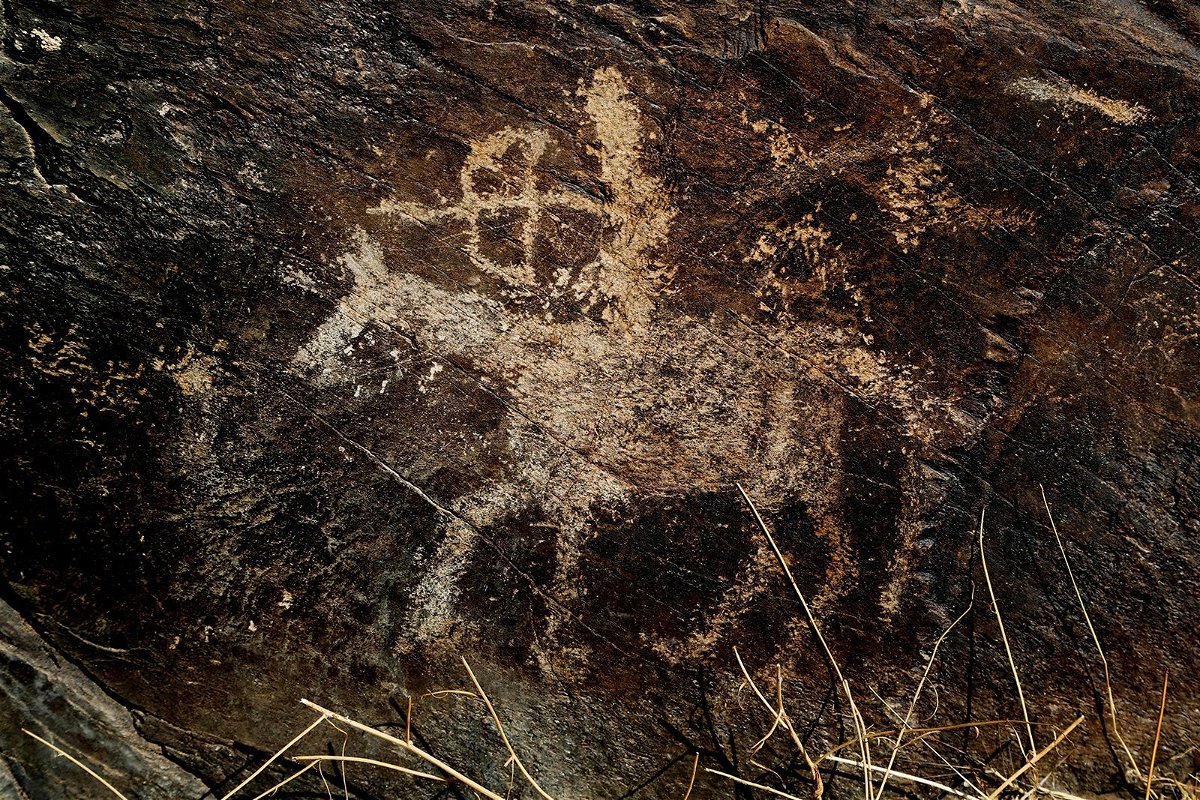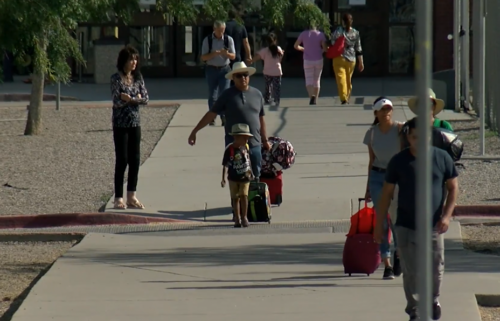Shattering the myth of men as hunters and women as gatherers

A new study challenges stereotypical ideas of gender roles in hunter-gatherer relationships. Here
By Mindy Weisberger, CNN
(CNN) — In a forest community where people forage to survive, hunters return from a successful outing with fresh kills slung over their shoulders. If you think you can picture them based on common gender stereotypes of hunter-gatherer communities, a new study suggests you should think again.
Such work was once thought to belong solely to the domain of men. But researchers have found that women in foraging societies were often the ones bringing home the bacon (and other prey, too).
According to a review of ethnographic records from around the world and spanning the past century, women — young and old alike — hunted large game as well as small animals. They hunted in groups or alone, with their children and with hunting dogs, and wielded weapons such as bows and arrows, knives and nets.
The findings add to a growing body of archaeological and observed evidence that has steadily eroded the long-held notion of strictly gendered roles in so-called hunter-gatherer communities from prehistory to the present, overturning the idea that men were always the hunters and women were exclusively gatherers.
The new study, published Wednesday in the journal PLOS One, consolidates lines of proof that women not only were habitual hunters but also that they hunted using specialized tools and strategies, and even taught children to hunt.
The woman warrior
A recent archaeological discovery set the stage for the investigation. In 2020, another team of scientists reported finding a 9,000-year-old female skeleton in the Andes Mountains, buried alongside tools for hunting and dressing big game. But when the remains were first uncovered, the presence of burial weapons led archaeologists to assume that the skeleton was male, said biological anthropologist Cara Wall-Scheffler, a professor and cochair of biology at Seattle Pacific University and senior author of the new study.
Morphological analysis and DNA testing confirmed that the ancient hunter was female. But that initial misinterpretation — and its reversal — sparked questions for Wall-Scheffler, she told CNN. If scientists’ biases led them to overlook important clues about women in the archaeological record, “maybe we’re missing what’s happening in the ethnographic literature as well,” Wall-Scheffler said.
“That’s what prompted my students and I to start reading everything that we could find that gave details of hunting strategies around the world.” (Wall-Scheffler conducted the research while at Seattle Pacific and is currently a visiting scholar at Charles University in the Czech Republic.)
Big-game hunters
For the study, scientists combed through a database containing ethnographic records of 1,400 human societies worldwide, going back 100 years. Of those, 391 were foraging communities. The study authors first identified records that described hunting practices in 63 societies, then looked for descriptions that focused on women.
Of the 63 foraging communities examined, 50 had records documenting women hunting. And in 87% of those societies, the records described planned, intentional hunting. Women hunted game of all sizes, “with large game pursued the most,” the study authors reported. Women also used specialized tools: In the Philippines, for example, Agta women hunted with knives, bows and arrows, or a combination of the two weapons, depending on personal preference.
In many of the groups, it seemed as though women had a more flexible approach to hunting than men did, Wall-Scheffler said.
“Males were taught to hunt in a particular way and had a very particular tool type they would use,” while women chose whatever tool they wanted at the time, she said. “They definitely took a role in teaching children, but it was flexible based on personal preferences.”
Women also exhibited greater variety than men in their choice of hunting partners, the study authors found.
“They would go with their husband, they would go with their friends, they would go with their sisters,” Wall-Scheffler said. “Sometimes a grandma would go all by herself if she had a particular way of capturing certain prey.”
Purposeful selection of weapons and strategy told the researchers that women were planning their hunting trips, rather than hunting opportunistically while performing other daily tasks.
Flexible gender roles
Reports of women hunting have been around for decades, but before this study they had never been compiled in one place, said evolutionary anthropologist Vivek Venkataraman, an assistant professor in the department of anthropology and archaeology at the University of Calgary in Canada. He was not involved in the research.
“This study tells us in more fine-grained detail what women are actually doing when they hunt,” Venkataraman told CNN in an email. “Women hunt in groups. They hunt with dogs. They use different technologies than men. Overall, they serve in a diversity of important roles that make hunting successful.”
However, Venkataraman cautioned against applying the findings too broadly to all foraging communities. There were 391 forager societies in the database, of which about 16% met the assigned criteria of containing records that described hunting practices. Though the scientists’ analysis shows strong evidence of women hunters within this subset of forager populations, it’s difficult to say for sure how widespread the behavior is across all foraging societies that were documented over the past 100 years, Venkataraman said.
“Nevertheless, this tells us some interesting things about how flexible gender roles can be,” he added.
In fact, that flexibility is an essential part of human survival — particularly in small communities where the contributions of every individual are important to the group, Wall-Scheffler said.
“Human survivorship cannot last with rigid gender roles,” she said. “In rapidly changing environments, especially in groups of humans that don’t have large populations, everybody has to be willing to lend a hand. And rigid taboos prevent that.”
The-CNN-Wire
™ & © 2023 Cable News Network, Inc., a Warner Bros. Discovery Company. All rights reserved.


